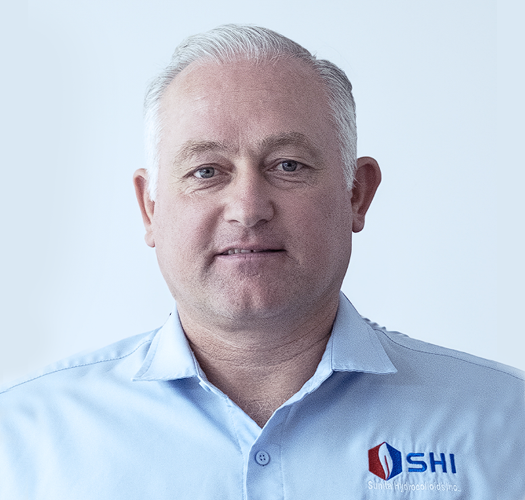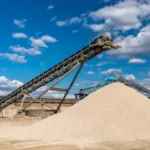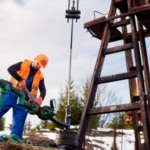The Role of pH Buffering Agents in Hydraulic Fracturing: Enhancing Fluid Stability and Performance

Hydraulic fracturing has reshaped how oil and gas are extracted from tight formations. By injecting high-pressure fluids into the subsurface, operators create fractures that unlock trapped hydrocarbons. But the chemistry behind these fluids is anything but simple. The complex composition of hydraulic fracturing fluids, including various chemical additives, plays a crucial role in ensuring fluid stability and performance during operations.
Each component, from gelling agents to crosslinkers, must perform consistently under extreme conditions. pH buffering agents are essential additives in hydraulic fracturing fluids that help maintain a stable pH range, which is critical for fluid viscosity, crosslinker activation, and proppant transport. Without proper pH control, operators risk premature gel breaking and poor proppant placement.
Sunita Hydrocolloids offers high-performance buffering agents engineered for oilfield applications. In this blog, you will learn how our buffers help drive better zonal isolation and more reliable completions.
What Are pH Buffering Agents?
pH buffering agents are chemical additives that help maintain a stable pH range in fracturing fluids by neutralizing excess hydrogen (H⁺) or hydroxide (OH⁻) ions. This stability is critical for preserving fluid viscosity, controlling crosslinker activation, and preventing unwanted reactions that can compromise well integrity or lead to fluid loss control issues.
In hydraulic fracturing, the chemistry of the fluid must remain consistent under extreme temperature and pressure. Without a buffering agent, even minor pH swings can trigger premature gel breaking or reduce the effectiveness of other fracturing fluid additives. Common buffering systems include potassium carbonate, sodium carbonate, potassium hydroxide, and blends of some of these chemicals, which work by keeping the fluid within its optimal pH window.
Sunita Hydrocolloids offers pH buffering agents engineered for high-performance fracturing applications. Our pH buffers are essential additives in hydraulic fracturing fluids to achieve stable fluid performance. They support slurry rheology, improve zonal isolation, and perform reliably across a wide range of salinity and temperature conditions.
Why pH Control Is Critical in Hydraulic Fracturing
pH control is the difference between a high-performing gel and a failed stimulation. Crosslinkers like borate rely on a narrow pH window to activate and form strong gel networks. If the fluid drifts outside that range, crosslinking weakens, viscosity drops, and proppant transport suffers.
Guar-based gels, widely used in fracturing, require precise pH to hydrate properly and maintain fluid rheology. Polymer hydration and gel stability are highly sensitive to pH fluctuations, especially in high-temperature reservoirs. Operators achieve optimal fluid performance by adjusting pH and alkalinity to the desired range.
Sunita Hydrocolloids’ pH buffering agents are designed to stabilize fluid chemistry across a wide range of salinity and temperature profiles. Our buffers help maintain well integrity, reduce fluid loss and support zonal isolation even in challenging formations. Most fracturing fluids operate within a pH range of 4.7 to 11.5, depending on formation compatibility and additive selection. Our buffers absorb excess H⁺ or OH⁻ ions, keep the fluid in its optimal zone, and prevent costly deviations.
Types of pH Buffering Agents Used in Hydraulic Fracturing
Fracturing fluid performance hinges on precise pH control, starting with selecting the right buffering agents. Each buffer plays a distinct role in maintaining fluid stability and supporting fluid rheology across varying temperature and salinity conditions. These buffering agents are often mixtures of various compounds, and their composition is tailored to the specific needs of the fracturing fluid.
- Potassium hydroxide is a go-to for low-temperature crosslinked systems. It adjusts pH quickly and supports early-stage gel formation, especially in shallow or cooler formations. The effectiveness of this buffer depends on its concentration and how well its components are dissolved in solution.
- Potassium carbonate steps in for moderate to high temperature jobs. It boosts viscosity and keeps crosslinkers active longer, helping maintain zonal isolation and proppant transport under thermal stress.
- Sodium carbonate and bicarbonate are widely used alkaline buffers. Beyond hydraulic fracturing pH control, they help manage scale formation, particularly as salts in the presence of calcium ions, especially in recycled water or high TDS environments.
Buffer solutions are an integral part of fracturing treatments. Buffer concentration and loading rates must be adjusted based on reservoir temperature, water chemistry, and additive compatibility.
Blended buffers like those offered by Sunita Hydrocolloids are mixtures designed to optimize fluid properties and are produced to match field-specific requirements. The composition of these mixtures is engineered to deliver consistent pH control, reduce additive interference and improve fluid loss control across complex formations.
How Sunita Hydrocolloids Supports Hydraulic Fracturing with Custom Buffer Solutions
Sunita Hydrocolloids recognizes that operators face a constant battle with pH drift in fracturing fluids. We offer a buffering agent portfolio, engineered to deliver consistent pH control across a wide range of temperatures, salinity levels, and water chemistries. Whether you’re working with fresh water, brine or recycled fluids, we help keep your fluid rheology and crosslinker performance locked in.
We offer low-temperature buffers such as sodium hydroxide solutions that activate quickly and hydrate guar efficiently. For hotter formations, our potassium hydroxide and potassium carbonate blends provide extended thermal stability and maintain optimal pH for borate crosslinking. These blends are field tested to support well integrity, reduce fluid loss and improve zonal isolation even under high shear and pressure.
What sets Sunita apart is our custom formulation capability. We work directly with operators to match buffer concentration and loading rates to reservoir conditions. Our buffers are backed by rigorous quality control, reliable supply chains, and responsive technical support.
Industry Data and Trends on pH Buffering in Hydraulic Fracturing
The global market for oilfield chemicals, including pH buffering agents is projected to reach $65 billion by 2034, driven by the push for chemical efficiency in unconventional reservoirs. Operators are prioritizing high-temperature stable buffers and low-residue formulations to meet performance and environmental targets. Research shows that uncontrolled pH can reduce fluid viscosity by a significant percentage, leading to poor proppant transport, lower fracture conductivity, and reduced hydrocarbon recovery.
New polymer-based fracturing fluids are showing pH responsive behavior and low friction, allowing better control over fluid rheology and reducing surface pressure requirements. Sunita Hydrocolloids is aligned with these trends and offers buffers that support fluid loss control, zonal isolation and well integrity across a wide range of salinity and temperature conditions.
Best Practices for Using pH Buffering Agents in Fracturing Operations
Getting pH control right starts with running a full water chemistry analysis before selecting any buffering agent. Salinity, temperature and ion content of the water used in hydraulic fracturing, all affect how buffers behave downhole. Match buffer type and concentration to your fluid system: potassium hydroxide works well in cooler zones, while carbonate blends hold up better under heat.
Monitor pH continuously throughout the job to catch any drift before it impacts slurry rheology or crosslinker activation. If viscosity drops or gel breaks early, adjust buffer loadings based on field feedback. Sunita Hydrocolloids supports operators with custom buffer formulations that respond to real time conditions and maintain well integrity across variable formations.
Conclusion
Stable pH is the backbone of reliable crosslinked fracturing fluid performance. pH buffering agents play a direct role in improving gel viscosity and boosting hydrocarbon recovery. Sunita Hydrocolloids delivers custom buffer solutions that adapt to your reservoir’s chemistry and temperature profile, helping you stay in control from surface to zone.
Explore our full range of buffers on the fracturing additives and see how we help operators optimize completions without over-treating.





